Improved collaboration between contractor and designer with Quadri
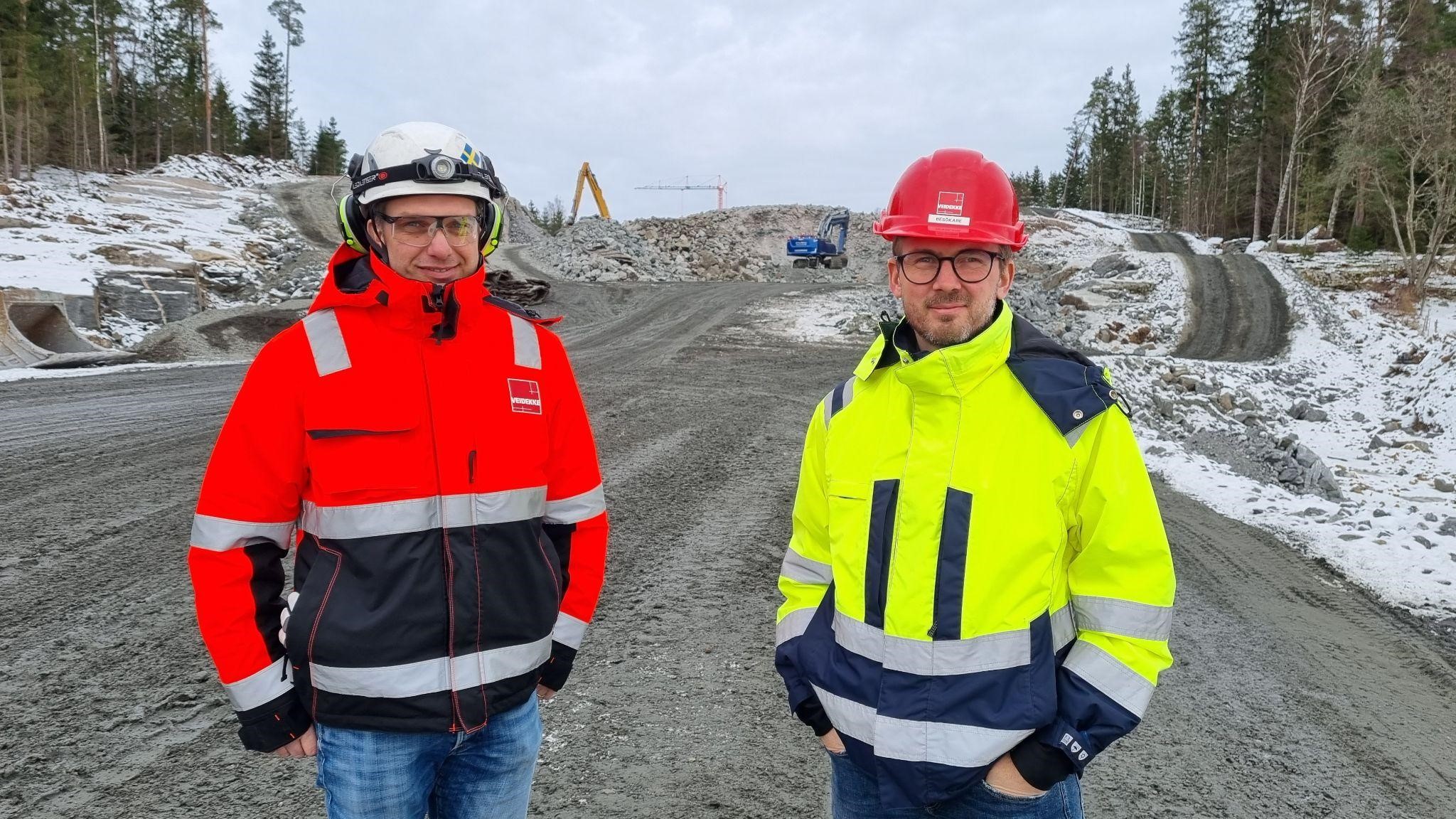
Road E20, one of the main roads between the east and west of Sweden, is currently upgraded on the part running through Västergötland. Between Göteborg and Skara there are a number of projects ongoing where Trimble Quadri is used as a common data environment, and Trimble Novapoint as a design tool. Both contractors and designers are using the Trimble products, and one of the contractors using both Quadri and Novapoint is Veidekke.
We at Trimble have been following the work of Veidekke and their design consultant Markera and how they are using Quadri. We wanted to know more about their experiences of using a shared model in the actual project. Said and done, a cold December day, with snow on the ground, we met up with chief surveyor Nils Tegerot at Veidekke and road design manager Claes Davidsson from Markera on the construction site outside Vårgårda. To get even more information we also talked to Henrik Sjöman, BIM-manager at Veidekke.
The project
The project Vårgårda-Ribbingsberg is a new road project, but also expands the existing road. The road is a 4-lane road with the speed limit of 100 km/h. The total length is 7,9 km and the project contains one ecoduct, a number of bridges, a bike underpass and access ramps. In addition emergency pockets, service vehicle turnarounds and a number of small animal underpasses are constructed.
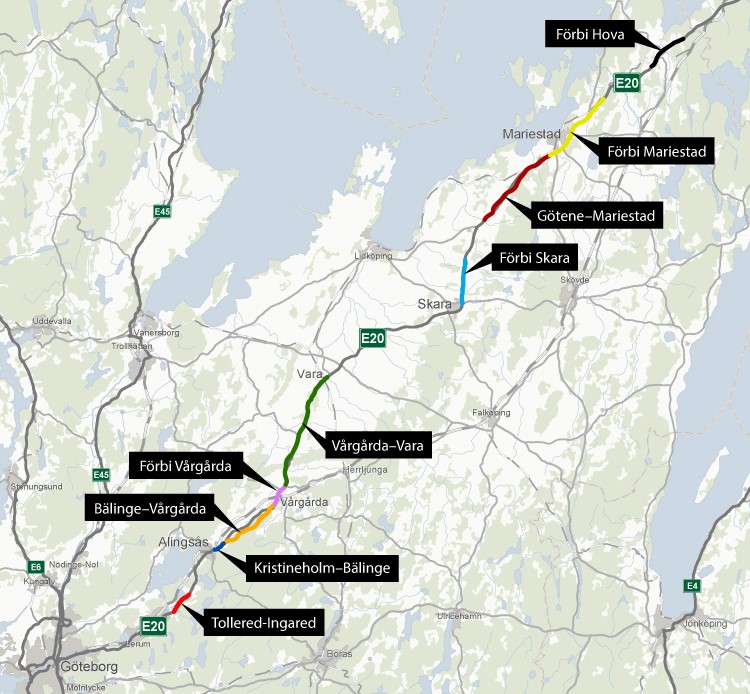
(Photo: Trafikverket, Swedish Transport Administration)
Contractor involved early in the project
The project is run as an ECI Contract, a fairly unusual contract type in Sweden, where Veidekke is assigned to run the project from the early planning phase and all the way until the complete road is delivered. Veidekke has engaged Markera as their main design consultant, Nils Tegerot tells us.
Both Henrik, Nils and Claes agree that there are major advantages to working in a shared model in a project like this. Claes Davidsson from Markera points out that a shared model environment is perfectly suited to this form of contract, because all stakeholders work together in another way then in a traditional design-bid-build project. Claes continues to tell us that work in the early planning stage in principle has been like a normal assignment for Trafikverket, the Swedish transport administration, who is the owner of this project. But having the contractor involved from the start is very valuable because we get a lot of construction input in the design phase, for example about temporary roads and diversions.
Nils Tegerot adds that it is really valuable for the contractor to get involved early in the process, because they get a much bigger understanding of the planning process and the challenges that occur there. So, both agree that this form of contract is really good.
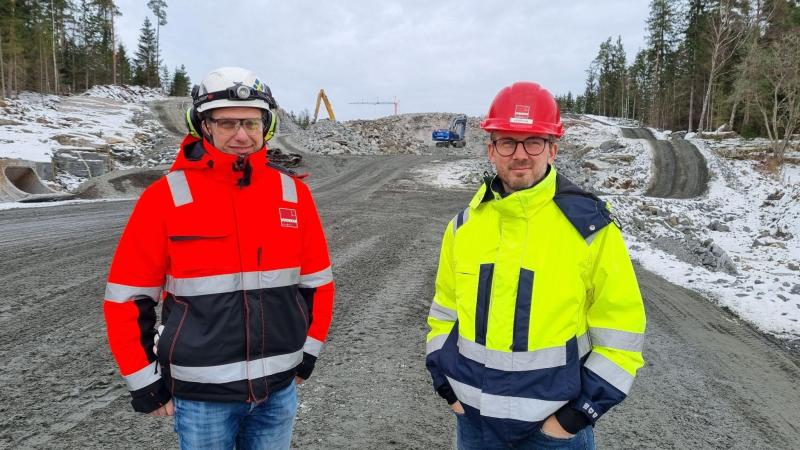
Constructible model
From a BIM-manager perspective, Henrik Sjöman describes the process of reaching the right level of detailing in each phase of the project; - The process as a whole is that we as contractor produce deliverables with the help from our designer Markera, and that the owner, Trafikverket performs a quality check.
We and the designers agreed on a suitable level of detail in advance which is then the base for the design budget and time scheduling, Henrik continues. We try to find a level that is practically usable, so each designer can see and understand what objects they will produce, and what level of detail they need to achieve when delivering. As an example we have totally dropped all demands of coding in the model, because we cannot see the practical benefit of it. On the other hand we have high demands on all designs of intersections where all surfaces and ditches must be constructable with data obtained directly from the Quadri model. This is a good example of us adapting the requirements to a practical usability of data, and nothing else, Henrik tells us.
The shared model is the center piece, not a separate process
With high demands, the designers are encouraged to have a higher level of detail of the designs than in other projects. Detailed design work takes time, so it is important to have the right level of requirements at the right phase of the project to avoid too much time on redesign when there is a need for changes. In my opinion the requirements are too detailed and too complicated in early phases and then also give time consuming and complicated changes. We, in the industry, must dare to find a cost- and time effective level of detailing and preserve the data quality that benefits the project's stakeholders. Henriks opinion is that the owners often require a too high level of detailing too early in the projects, which leads to unnecessary work and redesign.
When using a shared model, like Quadri, everyone can see what is going to be built in 3D and everyone also can see the benefits of having a correct model from the start of the projects. The model should not be a separate part of the process, it must be the center of the project where all relevant information is stored. When everyone has access to the model it is also a very good foundation for discussions and base for decision making.
Efficient collaboration between office and field
Nils Tegerot continues to describe the importance of communication between designer and contractor. We have recurring meetings where the designer delivers the model, explains changes and known errors. We as a contractor, in turn update the designer about the state of the construction, where we are currently working and what kind of information that is important for us in the coming period. Henrik Sjöman adds, these meetings are really important because we can address the right question to the right resource. Some things the designers are best suited to solve, like questions about road design or pavement dimensioning, meanwhile our surveyors can do some things directly at the site.
Claes agrees that this work process eases the work for all stakeholders. The designer learns what is most important, at the same time the designer understands how the model is organized and which data is ready for use where and when.
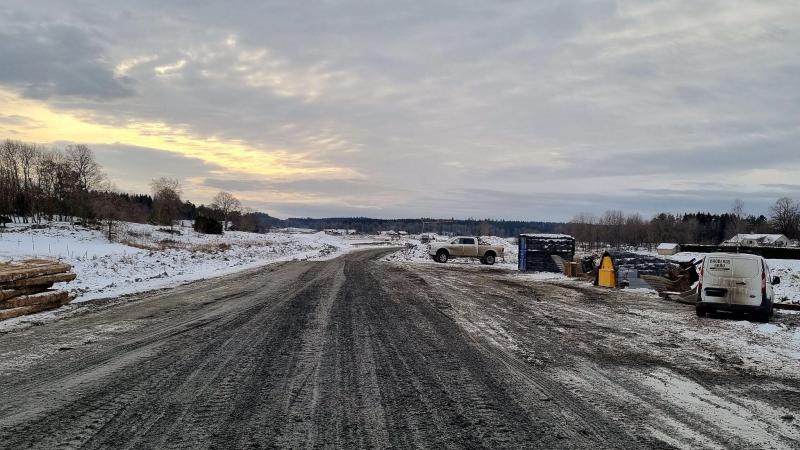
Using Quadri as our common data environment really makes our communication easy, Nils explains. Because everyone has access to the same data, and the model is instantly updated with the latest information, there is no hesitation about what is the current version of any data. We also do surveying for as-built documentation, we scan the area regularly and make surveys of all new pipes when they are ready. We can add all this to the model and compare to the design, and also get a really good base for the as-built drawings we deliver at the end of the project.
One common data environment
Even the owner's control engineer uses data from the Quadri model. He mainly exports road bed surfaces to compare the design and the as-built information. This works extremely well compared to before when we exported the whole model and sent it as a file to the owner once a week, Nils proceeds.
Markera and Veidekke worked together in another project a couple of years ago, where they also used Quadri, Claes explains. We learnt a lot during that process and brought that knowledge with us to this project. Both companies have been using both Quadri and Novapoint for a long time. Markera as an example, started using Quadri back in 2014, and have used Novapoint since the start of the company.
One thing we learned is the importance of doing a break in the model between different phases of the project. Just make a copy, store the copy as documentation and clear the model of irrelevant data before proceeding. In the early phases of the project before we reach the construction phase there is a lot of data created that we don't need later in the process. In the construction phase the focus is constructability and volumes, which affects what kind of data relevant to keep in the model, Claes points out with emphasis.
Trimble encourages all Quadri users to make a break in the model between phases to get a fresh start and clear out irrelevant data. This is also a good method before delivering the Quadri model in a traditional design-bid-build contract, where the model benefits from containing only the information needed to construct the project.
One source of truth
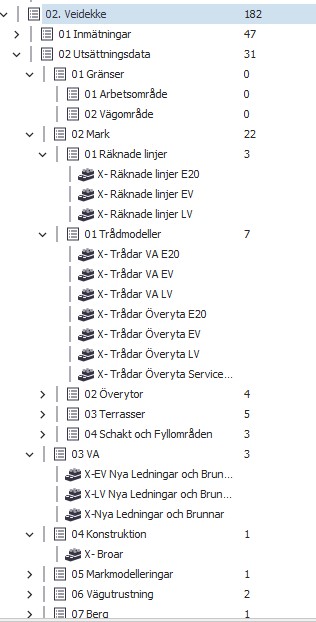
It is also important to have a distinct structure in the Quadri model, Henrik says. This makes it easier for everyone involved to find actual information. Here is the function to create Collections really useful.
Nils Tegerot explains that they use Collections in the Quadri model. This facilitates that all users can obtain the correct and updated data from the model. For example they have Collections containing updated breaklines from the road models, so the surveyors always can get data ready to use in the field without any hesitation.
Collections in the Quadri model is a function that enables a user to create a selection of data for other users, so they don't need to search the whole model for relevant information.
In the project the contractor has a mixed fleet of machines and a mix of different machine control systems, so there is a lot of file conversion to get data to the different machines, Nils explains. I think all chief surveyors would be happy if the industry could reach a higher level of standardization, he adds. When it comes to instruments and surveying software, Veidekke is a user of Leica equipment. The communication between Quadri and our SBG Geo surveying software works great, Nils explains.
Water and sewer designs directly in the model
All piping, culverts and drainage are designed with Novapoint Water and Sewer/Cable software application and are also stored in the Quadri model. The main advantage with Novapoint WS/Cable is that you get a complete model of the trenches with pipes, manholes, volumes and machine control data, this makes it very easy for us as a contractor to get the relevant data for the trench excavations and installation of pipes.
Actually I sent out the whole WS-model from Quadri yesterday, so we got it in the machines when we will start the main WS work, Nils says.
The only design not updated instantly in the Quadri model are the bridges. The bridge designer delivers updated IFC-files that we add as illustrations in the model, Claes Davidsson tells us. The new integrations, the Quadri connectors, are really interesting and are a great opportunity for the bridge designer to deliver their models directly to the model, and also get the base data like road alignments and terrain data from the Quadri model. Working like this surely reduces the risk of anyone using obsolete data as a basis for their design.
Less risk, more efficiency
The main benefit of using Quadri is that our decision making becomes faster and more accurate. We avoid misunderstandings and work better with changes during the project. Revisions become more of a sum up of changes during a specific period. Quadri makes it easy to understand the project and we on site also can affect how the model is built. This is of course a result of the contract form, but Quadri makes the work so much easier, Nils Tegerot summarizes.
Benefits of Quadri
- The contractor and the designer get a better understanding of what to do
- Everyone involved has access to an instantly updated collaboration model, always
- Easy to send data from Quadri to other systems
- Concurrent updating the model with as-built information like scanning, orthophotos and survey data